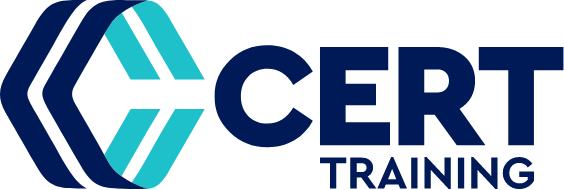Becoming Thermite Welders in the Rail Industry
Thermite welders are skilled professionals who use a widely-used welding process called exothermic welding, also known as thermite or thermit welding (TW), to weld railroad rails. To become a thermite welder in the rail industry, one must complete a specialised training program, gain practical experience, and obtain certification from a recognised training organisation.
What is thermite welding?
There are four types of welding methods commonly used in railway connections: flash butt welding, gas pressure welding, electric arc welding, and thermite welding. Thermite welding is a highly specialized and critical process in the rail industry. It is the process of welding two rail ends together, creating a seamless and strong joint. It is a simple and quick method that can easily weld metal parts together.
Thermite welding involves using an iron oxide and aluminium powder mixture that heats metal parts to a very high temperature for a thermite reaction. This reaction produces molten iron, which hardens to join rail tracks permanently. Thermite welding equipment typically includes a crucible to contain the thermite reaction, a mould to shape the weld, and a thermite igniter to initiate the reaction.
This welding process is essential for ensuring the free movement of rail through expansion and contraction and for providing a safe and smooth ride for passengers and cargo.
Why do we weld rail together?
The primary reason for welding rails together is to ensure a continuous welded rail, without any joints. This is essential for smooth and safe train operations. Joints need to be examined and maintained regularly to ensure they are effective for the safe passage of trains, replacement parts and track maintenance can run into significant cost, so welding the rails together helps reduce this and provide a better railway. Moreover, the rail can undergo significant expansion and contraction due to temperature changes, and welding the rails together helps to prevent these movements from affecting the rail’s stability.
If there are no mechanical joints, what happens to free movement of rail through expansion and contraction?
The rail can undergo significant expansion and contraction due to temperature changes, and welding the rails together helps to prevent these movements from affecting the rail’s stability. If the rail is not welded together, the mechanical joints used to connect two rails can become loose, leading to unstable track and high maintenance. Welding the rails together eliminates the need for mechanical joints, ensuring a seamless and stable track.
Training and Qualification of Thermite Welders
Becoming a thermite welder is a challenging but rewarding process. It requires both theoretical training and hands-on experience in the field. Here are the steps to becoming a thermite welder:
1.Work with a qualified welder
It is recommended that interested individuals spend a couple of months working with a qualified welder to get a reasonable idea of what is involved in becoming a rail welder. This will allow them to become familiar with the welding process, grinding rails, and using OXY-LPG cutting equipment,
2.Theory Training
The theory training is a five-day course that provides a comprehensive understanding of the thermite welding process. It is recommended that the trainee spend some time with a qualified welder before attending this course.
3.On-job Workbook
At the end of the five-day theory training, the trainee is given an On-Job Workbook to complete during their on-job training under supervision. This involves working with a qualified welder after the Theory Training who will assist in completion of the On-Job Workbook.
Can women become thermite welders?
Absolutely! The rail industry is open to diversity and there is no discrimination based on gender. In the rail industry, what matters most is the ability to perform the job effectively and safely. Individuals who are interested in this field should have a strong interest in welding and be willing to put in the time and effort required to become a skilled welder.
Becoming a thermite welder is a challenging but rewarding career choice in the rail industry. With the right training and hands-on experience, individuals can play a critical role in ensuring the safety and smooth operation of trains, while enjoying a rewarding career.
CERT Training offers the following rail welding courses nationally: aluminothermic welds (thermite & railtech procedure), electric, grind rail, and oxy-LPG welding courses. During their welding training, students will learn about grinding techniques and rail industry standards for rail profiles and surface conditions.
To enquire about thermite rail welding training, contact us on: 1300 042 3780 or, click your state below to follow the link to welding.

10 Ways Railway Training Can Boost Your Career
With the right training and development, you can gain the skills and knowledge you need to advance your career in rail and take advantage of new job opportunities.

Queensland Rail Jobs: Why You Need SARC & Fatigue Management Course
Safety is front of mind within the rail sector. Pathways like the SARC & Fatigue Management course, the best fatigue management course, are designed…

How to complete your RISI course for NSW Rail Job?
If you are looking for a rail job in NSW then you must complete the Rail Industry Safety Induction (RISI) course. A nationally recognised…
